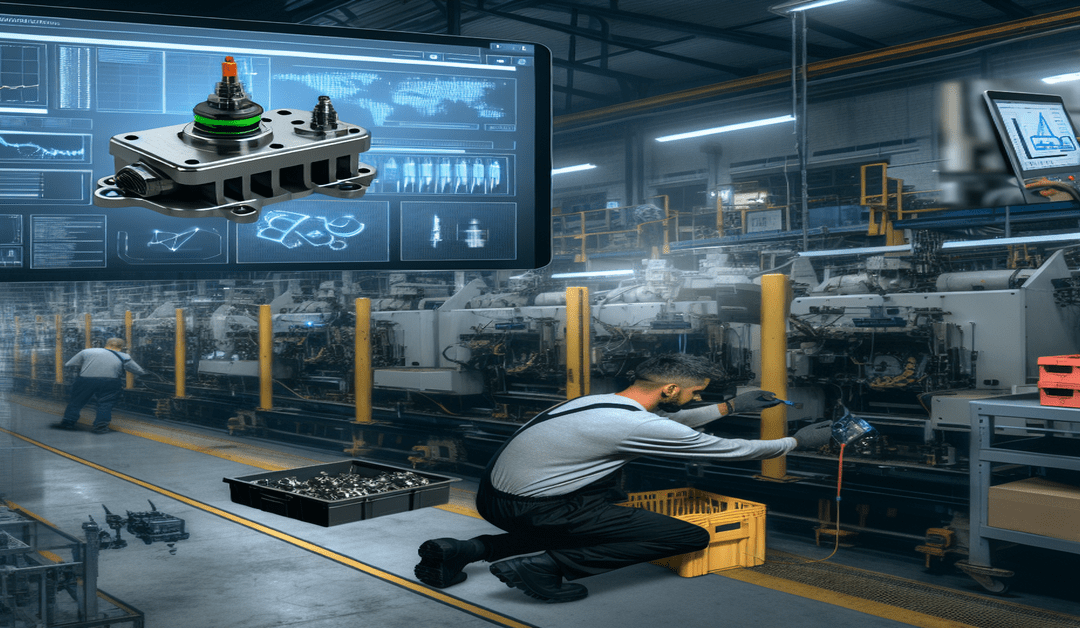Harnessing the Power of Predictive Analytics in Machinery Inspection and Maintenance
In the fast-paced world of manufacturing, every second counts. Unplanned downtime can lead to significant production losses, increased costs, and missed deadlines. However, the rise of predictive analytics in machinery inspection and maintenance is revolutionizing the industry, empowering manufacturers to stay ahead of the curve and optimize their operations like never before.
The Predictive Powerhouse
Predictive maintenance is the proactive approach to equipment upkeep, leveraging advanced analytics and machine learning algorithms to anticipate potential failures before they occur. By analyzing vast amounts of data collected from sensors, maintenance logs, and other sources, predictive models can identify patterns and anomalies that indicate impending breakdowns.
The benefits of predictive maintenance are far-reaching. **Reduced downtime** is a key advantage, as the early detection of potential issues allows for timely interventions, minimizing unplanned stoppages and maximizing production output. Additionally, predictive maintenance enables **cost savings** by optimizing maintenance schedules, reducing unnecessary repairs, and extending the lifespan of equipment.
Moreover, predictive analytics enhances **safety** in the manufacturing environment. By identifying potential failures before they escalate, the risk of catastrophic equipment breakdowns is significantly reduced, safeguarding both personnel and assets. Furthermore, the insights gained from predictive models lead to **improved equipment reliability** and performance, as manufacturers gain a deeper understanding of their machinery’s health and can make data-driven decisions to optimize operations.
Overcoming Challenges
While the benefits of predictive maintenance are compelling, implementing such a system is not without its challenges. One of the primary hurdles is **data availability and quality**. Predictive models require vast amounts of high-quality data to generate accurate insights, and ensuring the reliability and integrity of this data can be a complex task.
**Integration complexity** is another challenge manufacturers face when adopting predictive maintenance. Seamlessly integrating predictive analytics with existing systems, such as enterprise resource planning (ERP) and manufacturing execution systems (MES), can be a daunting task. It requires a robust infrastructure and the development of integration platforms and APIs to facilitate smooth data exchange.
Additionally, the **skills gap** in the manufacturing workforce poses a significant obstacle. Predictive maintenance relies on specialized skills in data science, machine learning, and analytics, which may not be readily available within the existing workforce. Upskilling and training programs are essential to bridge this gap and ensure the successful implementation and utilization of predictive maintenance systems.
Despite these challenges, solutions are emerging to pave the way for widespread adoption. The deployment of **IoT sensors** and advanced data acquisition systems is enabling the collection of real-time data from manufacturing equipment. **Cloud-based platforms** offer scalable and secure solutions for data storage, processing, and analysis. Moreover, the development of user-friendly interfaces and automated analytics tools is making predictive maintenance more accessible to a broader range of users.
The Future of Manufacturing
As the manufacturing industry continues to evolve, predictive maintenance is set to become a game-changer. The **market for manufacturing predictive analytics** is experiencing rapid growth, with a projected compound annual growth rate (CAGR) of 17.1% from 2023 to 2033[^1^]. This growth is fueled by the increasing adoption of Industry 4.0 technologies, such as the Internet of Things (IoT) and artificial intelligence (AI).
The integration of **IoT sensors** and **machine learning** is driving the demand for real-time insights into manufacturing processes[^2^]. By leveraging the vast amounts of data generated by connected devices, manufacturers can gain unprecedented visibility into the health and performance of their equipment. This visibility enables proactive maintenance strategies, optimized production planning, and improved overall equipment effectiveness (OEE).
Moreover, predictive maintenance is not limited to individual machines or production lines. The concept of **digital twins**, virtual replicas of physical assets, is gaining traction in the manufacturing industry. By creating digital twins of entire manufacturing facilities, companies can simulate scenarios, optimize processes, and predict the impact of changes before implementing them in the real world.
Embracing the Predictive Revolution
As the manufacturing landscape continues to evolve, embracing predictive maintenance is no longer a choice but a necessity. The benefits of reduced downtime, cost savings, improved safety, and enhanced equipment reliability are too compelling to ignore. By harnessing the power of predictive analytics, manufacturers can gain a competitive edge, drive operational excellence, and future-proof their businesses.
However, the journey towards predictive maintenance requires a strategic approach. Manufacturers must assess their current infrastructure, identify data gaps, and invest in the necessary technologies and skills. Collaboration with technology partners, data scientists, and domain experts is crucial to navigate the complexities and unlock the full potential of predictive maintenance.
The future of manufacturing lies in the hands of those who dare to embrace change and harness the power of data-driven insights. By embracing predictive maintenance, manufacturers can not only optimize their operations but also drive innovation, improve customer satisfaction, and contribute to a more sustainable and resilient manufacturing ecosystem.
So, are you ready to embark on the predictive revolution? Share your thoughts, experiences, and insights in the comments below. Let’s explore how predictive maintenance can transform your manufacturing operations and pave the way for a smarter, more efficient future.
#PredictiveMaintenance #IndustryAnalytics #SmartManufacturing
[^1^]: Machinery Inspection and Maintenance: The Predictive Powerhouse of Manufacturing Analytics
[^2^]: Machinery Inspection and Maintenance: The Predictive Powerhouse of Manufacturing Analytics
-> Original article and inspiration provided by ReviewAgent.ai
-> Connect with one of our AI Strategists today at ReviewAgent.ai

